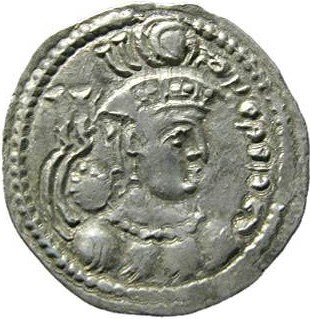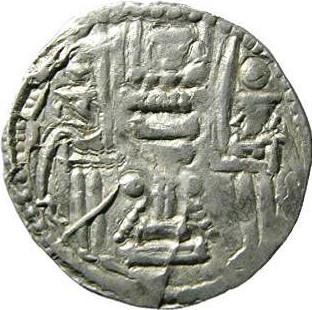Kidarite Kingdom Drachm - Hunnic tribes Kidarites - Peroz (Sassanian style, Shapur III imitation, Kapisa-Gandhara)
Posted on:
keywords: Kidarite Kingdom, Drachm - Hunnic tribes Kidarites - Peroz (Sassanian style, Shapur III imitation, Kapisa-Gandhara), Drachm, coin collecting, numismatics, Kidarite Kingdom
- Introduction: The Kidarite Kingdom Drachm depicting Peroz in Sassanian style, imitating Shapur III, holds significant historical and numismatic value. This coin showcases a fusion of cultural and artistic influences, making it a fascinating piece for collectors and history enthusiasts alike.
- Historical Background: Issued in 390 AD by the Kidarite Kingdom, this Drachm represents a pivotal period in Central Asian history. The Kidarites, a powerful nomadic tribe, ruled over parts of Central Asia and Northern India, blending local traditions with influences from neighboring empires like the Sassanians.
- Design Features: The obverse of the coin features an unread Pahlavi legend and Bactrian inscriptions in a counterclockwise direction, surrounding the bust of Peroz wearing the crown of Shapur III. On the reverse, a striking image of a fire altar with attendants symbolizes religious and cultural significance.
- Technical Specifications: This silver Drachm weighs 3.53g and showcases exquisite craftsmanship in its design. The combination of Sassanian and local elements reflects the multicultural nature of the Kidarite Kingdom and its interactions with surrounding regions.
- Collectible Value: The Kidarite Kingdom Drachm - Peroz holds both historical and collectible significance. Its rarity, coupled with the unique blend of artistic styles, makes it a sought-after piece among numismatists. The market value of this coin reflects its scarcity and the intricate details that set it apart from other contemporary coins.
- Conclusion: In conclusion, the Kidarite Kingdom Drachm featuring Peroz in a Sassanian style, with a Shapur III imitation design, offers a glimpse into the rich history and artistic exchanges of the ancient Central Asian region. This coin serves as a testament to the diverse cultural influences that shaped the numismatic landscape of the time, making it a valuable addition to any coin collection. By following the structured format and incorporating relevant keywords naturally throughout the article, this SEO-optimized content aims to provide valuable insights for both coin enthusiasts and readers interested in the historical context of ancient coins.
Coin Images
 Obverse
Obverse
 Reverse
Reverse

